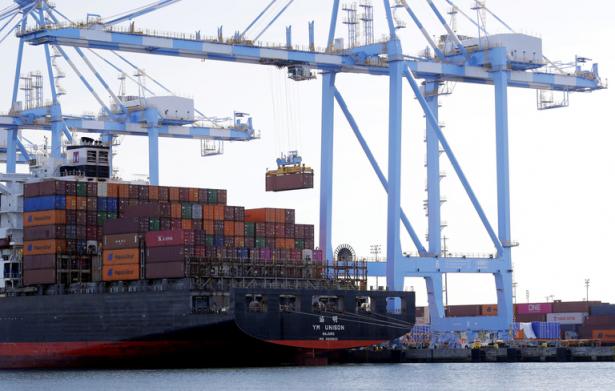On Oct. 13, President Joe Biden urged West Coast ports to operate 24/7 to help clear the nationwide congestion that’s highly visible at the ports — primarily at Los Angeles/Long Beach, but also in the Puget Sound as ships are moored or anchored while waiting to call on Northwest ports.
A week prior, on Oct. 8, the Northwest Seaport Alliance posted on Twitter, “THANK YOU to @LongshoreWorkers for their dedication to keeping our economy moving! You are a critical part of our supply chain & keep cargo moving to businesses & families across Washington state and the Midwest.”
What’s going on? As the union presidents representing more than 3,000 longshore workers at the Ports of Seattle and Tacoma, we want to inform readers on the roots of the problem — and what can be done about it.
The Ports of Seattle and Tacoma are owned by the taxpayers of King and Pierce counties, respectively. Both ports are landlord ports, meaning they lease public land to private terminal operators. The industry has evolved to where nearly all terminal operators on the West Coast are foreign-owned companies, and all order International Longshore and Warehouse Union (ILWU) labor on a day-to-day basis to work at their facilities.
As the global pandemic took hold last year, many businesses, factories and restaurants shut down or curtailed hours and working conditions. But the ports never closed; not even for a single day. In fact, the opposite happened.
As consumers shifted their spending away from travel, restaurants and services, they spent more money purchasing goods online. This upended the decades-old models that had worked in the supply chain, exposing weaknesses and shortages in railroads, trucking and warehousing, which created backlogs from coast to coast.
The industry buzz is that every vessel in the world that can float is carrying goods. Typically, after a shipping container arrives at U.S. ports, it sits for two to five days before being loaded onto a train bound for the Midwest or picked up by a local truck driver. Due to unprecedented imports and off-dock labor shortages, this dwell period is now taking as much as four times as long. As cargo backs up on the terminals, the next vessel’s containers have nowhere to go, and the congestion keeps compounding.
This problem is multifaceted: First, U.S. rail lines are clogged because there are not enough rail cars, engines, or rail workers available to move the cargo. Second, Midwest rail depot yards are full and accepting no more containers. Third, a lack of local and long-haul truck drivers and chassis are slowing the ability of cargo to be picked up and delivered to warehouses and factories throughout the U.S., not just the West Coast. Fourth, port terminal facilities in Tacoma and Seattle generally only operate their gate facilities for truck drivers on the day shift Monday through Friday while vessel operations continue to work 24/7.
What can be done? President Biden’s announcement encouraging shippers and terminal operators to operate on a 24-hour basis is a step in the right direction, but it’s important to note that ILWU workers are already available to work 24/7 — it’s been in our contract for decades. It now requires a commitment from others in the supply chain to do the same.
This means it’s up to terminal operators to open their gates and hire labor on nights, weekends and/or other off-peak hours. Trucking companies, warehouses and distribution centers will need to adjust their hours as well, potentially adjusting staffing levels to cover more shifts.
These changes will help get the containers off the docks faster, allowing for more cargo to arrive and more ships to be worked. All partners in the supply chain need to be willing to participate in these needed changes for it to have a positive effect.
ILWU longshore workers in Tacoma and Seattle have been urging the use of 24/7 shifts for months and support this model. We have set records for both hours worked and cargo moved this past year, and we hope that others within the supply chain — terminal operators, railroads, trucking companies, warehouses and distribution centers — will match the ILWU’s commitment to provide labor and resources for the movement of cargo 24/7.
We’ve done our part to keep store shelves stocked every day during the pandemic, and we invite others to join us in keeping our supply chain moving around the clock.


Spread the word